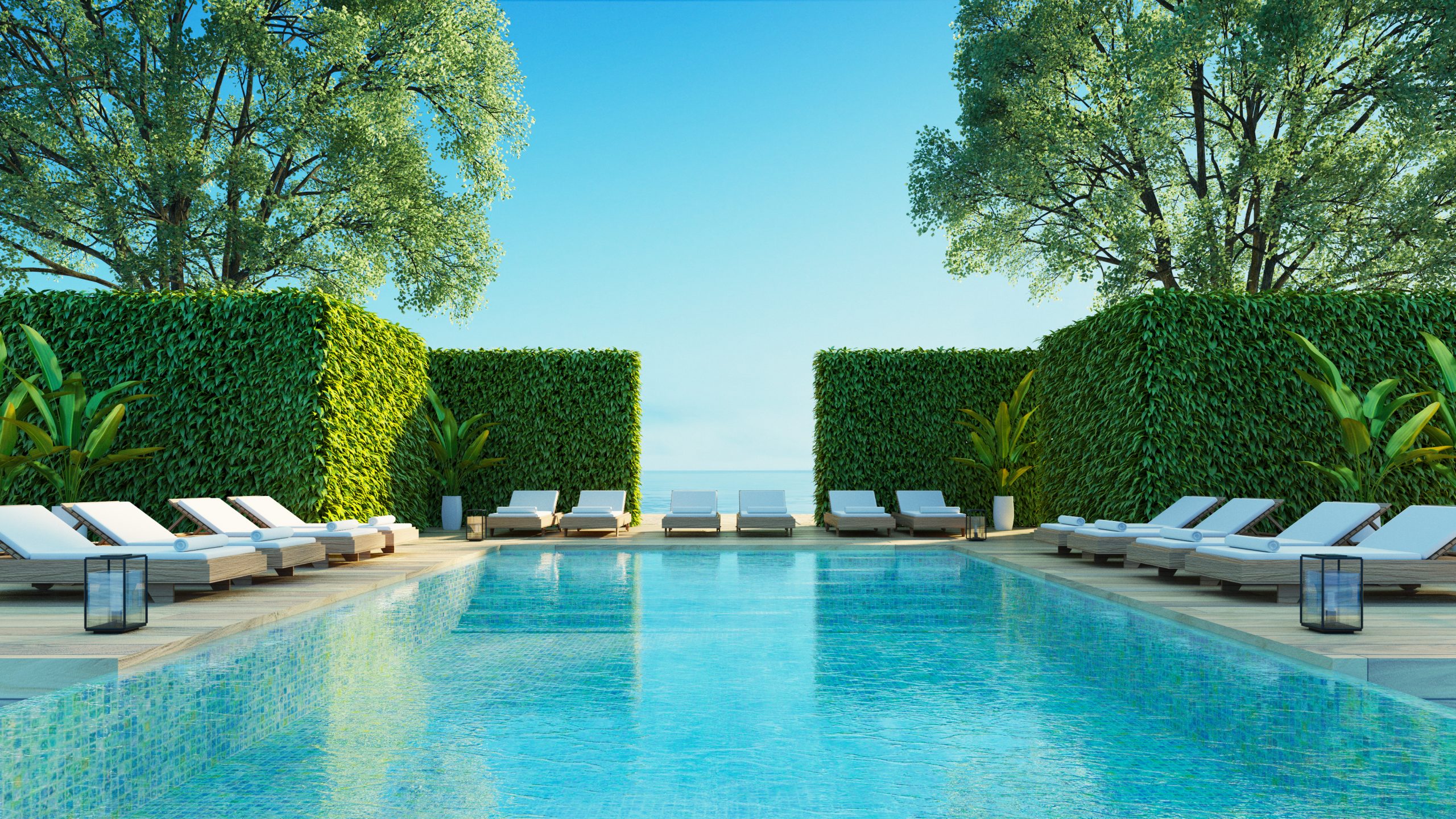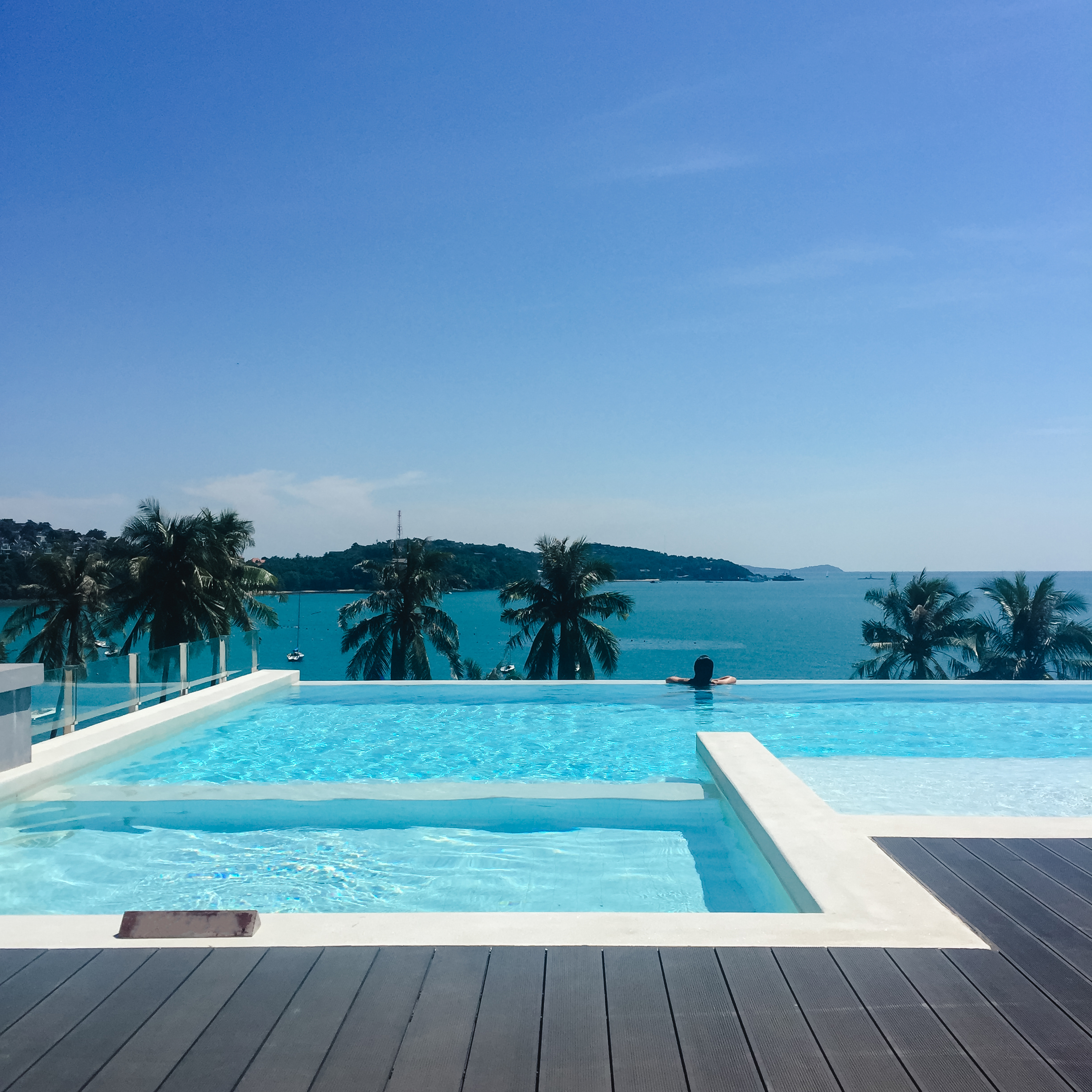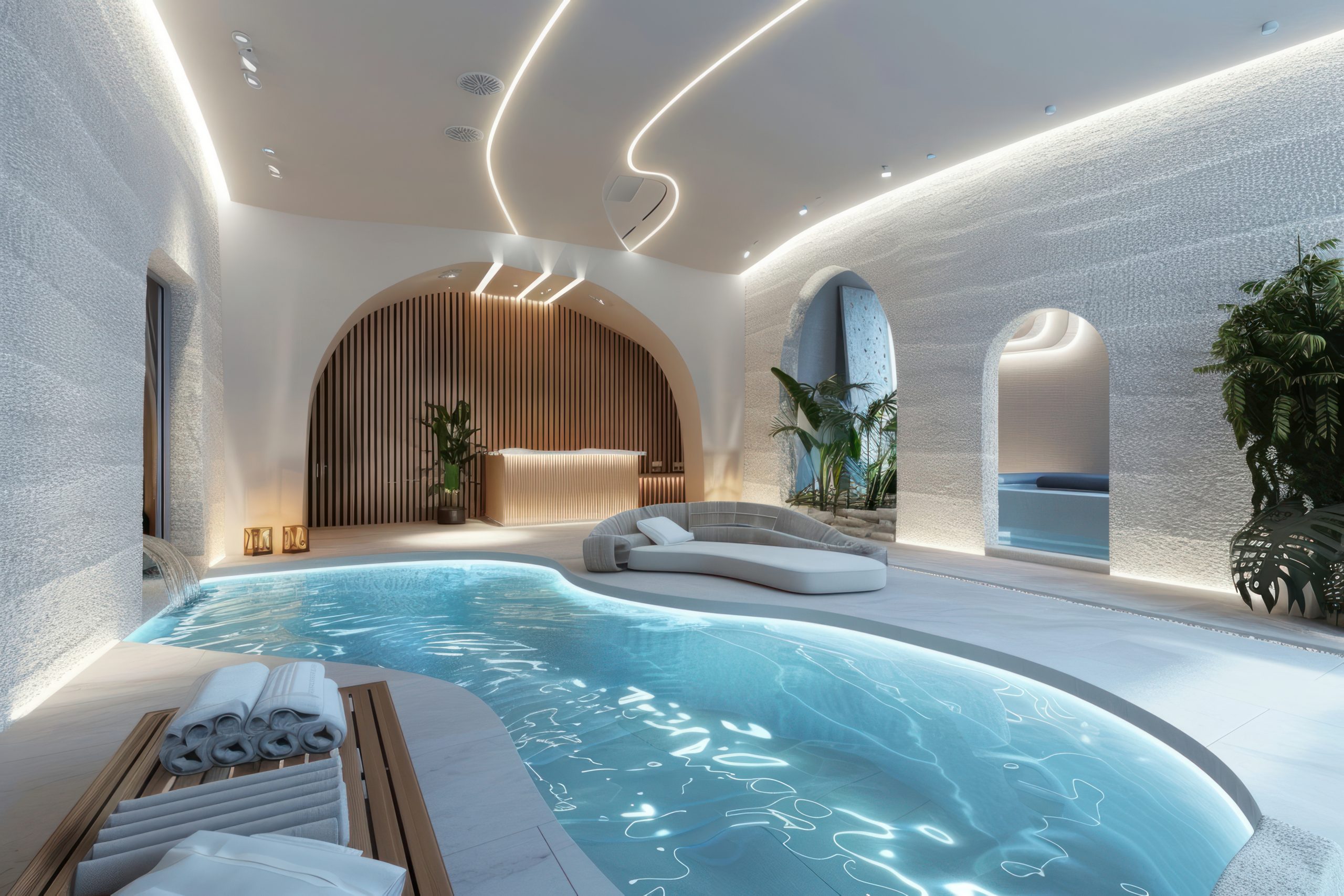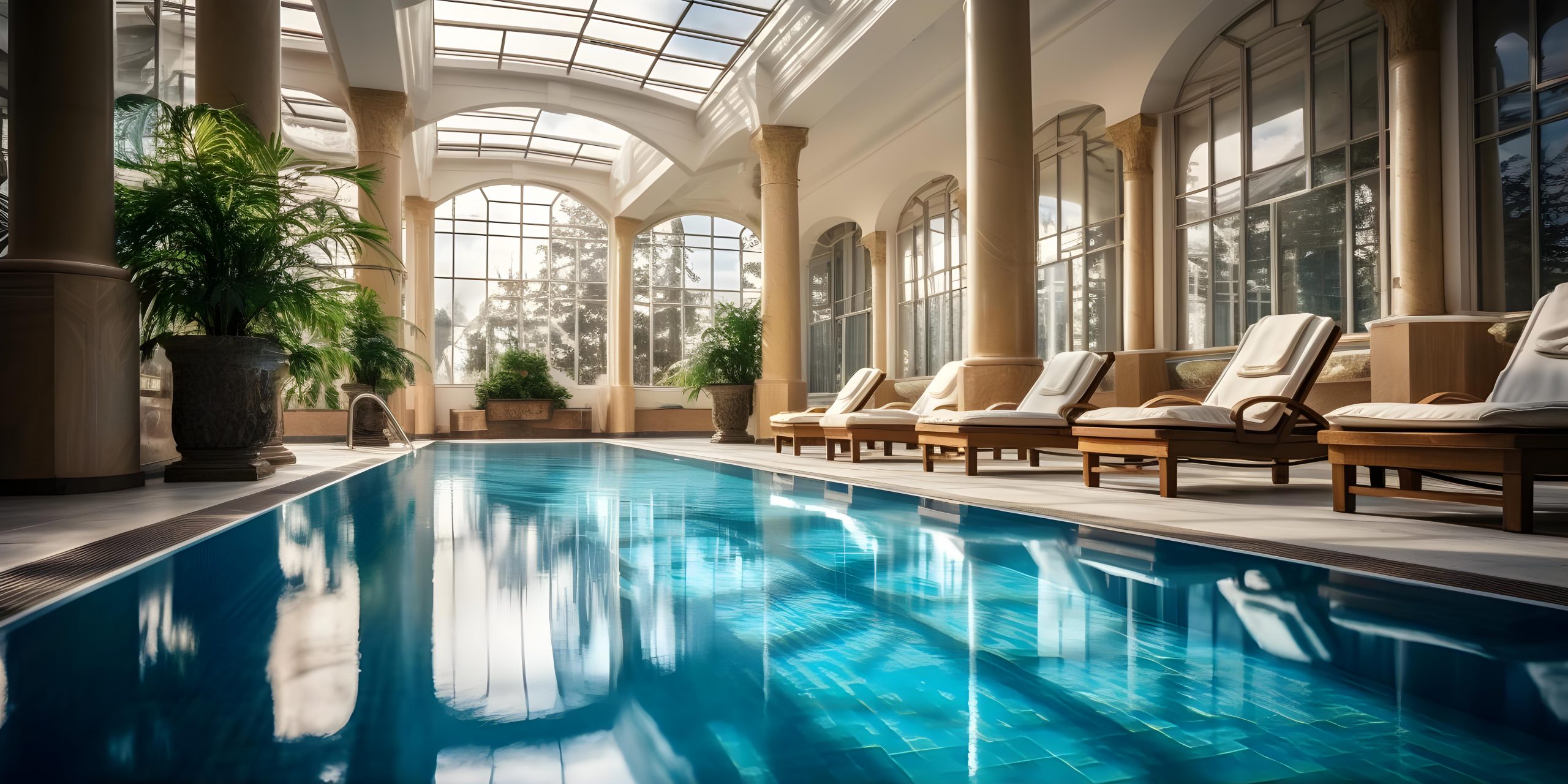Tips For Maintaining a Pristine Oasis Post Renovation
You’ve invested in transforming your backyard with a stunning pool renovation, whether it was a modern aesthetic update, a complete overhaul with new features, or a necessary repair that restored its functionality.
Now that your pool is a beautiful, pristine oasis, it’s essential to implement a consistent maintenance routine to keep it looking its best and ensure its longevity.
This guide offers practical advice on maintaining a newly renovated pool, addressing seasonal care and troubleshooting common issues like cloudy water or algae growth.
1. Establishing a Maintenance Routine: The First Step to a Healthy Pool
A regular maintenance schedule is key to preserving your pool’s beauty and preventing costly issues down the line.
Daily Tasks
- Skimming: Use a long-handled net to remove leaves, bugs, and other debris from the surface of the water daily. This prevents them from settling on the bottom and potentially staining the new surface.
- Checking water levels: Evaporation is a factor, especially in Atlanta’s arid climate. Check your water level daily and ensure it reaches the midpoint of the skimmer opening. Refill as needed to avoid damage to your pump. A pool cover can help reduce evaporation.
Weekly Tasks
- Brushing: Use a soft-bristle pool brush to gently scrub the pool walls and floor. This removes any accumulating dirt, algae, or other residues that can cling to the surface and cause discoloration or damage, advises Creative Resurfacing Solutions.
- Vacuuming: Use a pool vacuum to clean the bottom of the pool and remove settled debris. Automatic cleaners can be a great time-saving investment.
- Cleaning the filter: Regularly backwash (for sand filters) or clean (for cartridge and DE filters) your filter to maintain optimal performance. A clogged filter hinders proper filtration and can lead to cloudy water.
- Checking and balancing water chemistry: This is paramount, particularly in Atlanta’s intense heat, which can accelerate chlorine breakdown. Test your pool water regularly (at least weekly) for pH, alkalinity, and chlorine levels.
- pH Levels: Aim for a range between 7.4 and 7.6 to prevent damage to the surface and equipment, and to avoid swimmer discomfort.
- Alkalinity: Maintain between 80-120 ppm to help stabilize pH.
- Chlorine: Keep chlorine levels between 1-3 ppm to ensure sanitation. Adjust chemical levels as needed to prevent algae and bacteria growth and protect your pool’s finish. Consider using stabilized chlorine or cyanuric acid to protect chlorine from UV degradation.
- Shocking the Pool: After heavy use, rainstorms, or if you notice any signs of algae or cloudiness, it’s wise to shock the pool by adding a large dose of chlorine or non-chlorine shock to eliminate contaminants and refresh the water.
2. Seasonal Maintenance for Atlanta Pools
Atlanta’s unique desert climate necessitates specific seasonal pool care.
- Summer: The intense heat requires close attention to water levels and chlorine levels due to rapid evaporation and chlorine degradation. Increase cleaning frequency, running the filter for at least 8-12 hours daily, and consider using a pool cooler or shade structures to manage water temperature.
- Fall: While still warm, cooler nights can necessitate running the pump overnight to prevent freezing temperatures from damaging pipes, says. Continue skimming and balancing chemicals as debris like leaves and dirt can still accumulate.
- Winter: If you plan on year-round swimming, continue your regular maintenance routine. If not, winterizing the pool involves a thorough cleaning, balancing the chemicals, lowering the water level (about six inches below skimmers), and installing a pool cover. Some suggest using a phosphate remover to prevent algae.
- Spring: As temperatures rise, inspect pool equipment (pump, filter, heater) and ensure they’re in good working order. Balance water chemistry and resume a regular cleaning schedule in preparation for the upcoming summer season.
3. Troubleshooting Common Pool Issues
Even with diligent maintenance, issues can arise. Here’s how to address common problems:
- Cloudy Water:
- Check Water Chemistry: Imbalanced pH, alkalinity, or chlorine levels are common culprits. Test and adjust as needed.
- Inspect Filtration System: A dirty or malfunctioning filter won’t remove contaminants, leading to cloudiness. Clean or backwash your filter, ensure adequate pump run time (at least 8-12 hours per day), and consider replacing worn filter media or equipment if necessary.
- Remove Contaminants: Dust, debris, pollen, and even sunscreen can contribute to cloudiness. Ensure regular skimming and vacuuming. Consider using a pool clarifier or flocculant to bind small particles together, making them easier for the filter to capture or for you to vacuum out.
- Leaks:
- Bucket Test: If you suspect a leak, perform a bucket test to confirm.
- Inspect Visually: Check around equipment, plumbing, and fittings for signs of dampness or rust.
- Dye Test: Use colored dye to pinpoint the exact location of a leak if necessary.
- Professional Help: For significant leaks, contact ITA Phoenix Pool Professionals for repairs.
- Algae Growth:
- Maintain Chemical Balance: Ensure correct pH and chlorine levels, as low chlorine or high pH can encourage algae growth.
- Clean Regularly: Algae thrive on dirt and debris, so regular skimming, brushing, and vacuuming are essential to remove potential breeding grounds.
- Shock the Pool: Shocking can help kill existing algae.
- Use Algaecide: Consider adding an algaecide to prevent algae from forming in the first place, or to enhance the effectiveness of shocking if algae are already present. According to Walmart, a popular algaecide is Clorox Pool & Spa Algaecide + Clarifier. Another product available is PoolRx Blue Unit 331001. You may also purchase Coral Seas Green Aid.
- Pump and Motor Issues:
- Check Prime: Ensure the pump is primed and free of debris if it’s not starting or making strange noises.
- Inspect for Damage: Look for worn belts, loose wiring, or damaged impellers.
- Professional Repair: Consult ITA Phoenix Pool Professionals for motor repairs or replacement if needed.
- Low Water Pressure: Clean skimmer and pump baskets, and check the filter and impeller for blockages.
Maintaining your renovated pool diligently ensures a sparkling, safe, and enjoyable backyard oasis for years to come. Remember, consistent care, including regular cleaning, balancing water chemistry, and proactive troubleshooting, are crucial to preserving your investment.
Entrust Your Pool Renovation to the Experts
While maintaining your newly renovated pool is an ongoing commitment, ensuring a quality renovation from the start can make a world of difference. At ITA Phoenix Pool Remodeling, we specialize in creating and transforming pools into stunning and functional spaces that enhance your home and lifestyle. Our expertise in design, construction, and repair ensures a foundation built for lasting beauty and enjoyment. Contact us today to discuss your vision and let us help you achieve the backyard oasis you’ve always dreamed of. While we don’t offer pool cleaning or maintenance services, we’re dedicated to providing you with the highest quality pool remodeling and renovation services, backed by the knowledge and expertise to help you maintain your newly built or renovated pool for years to come.




